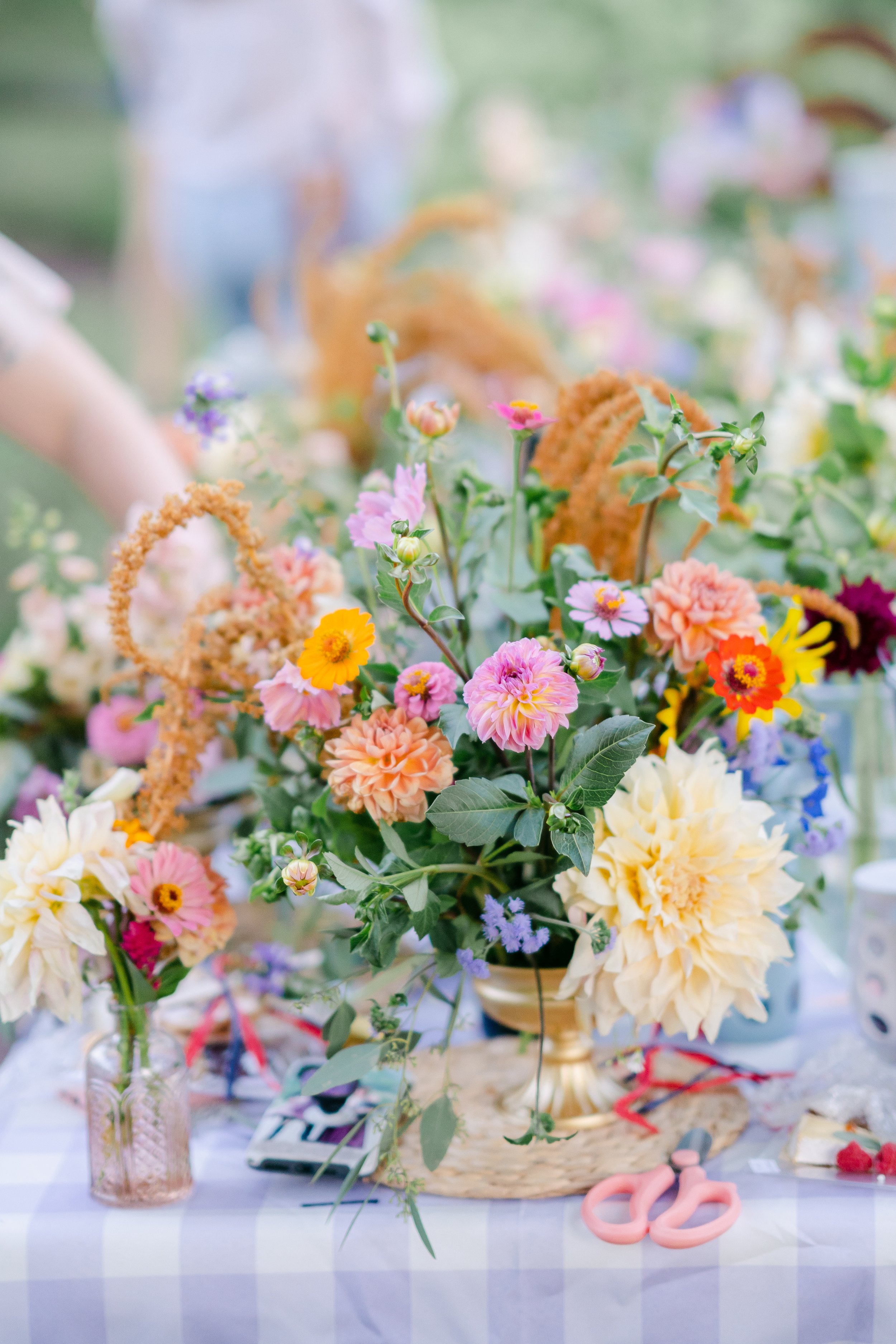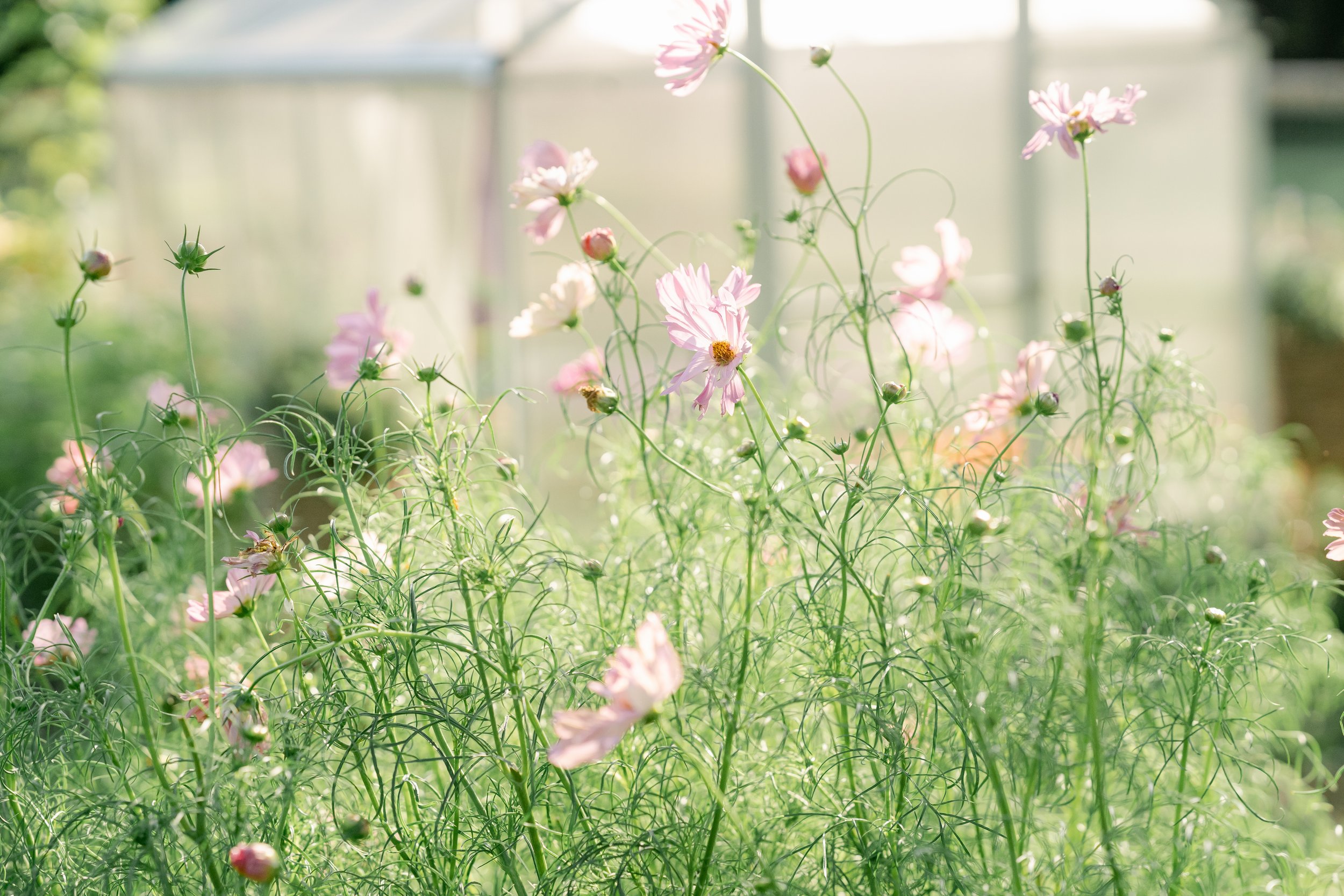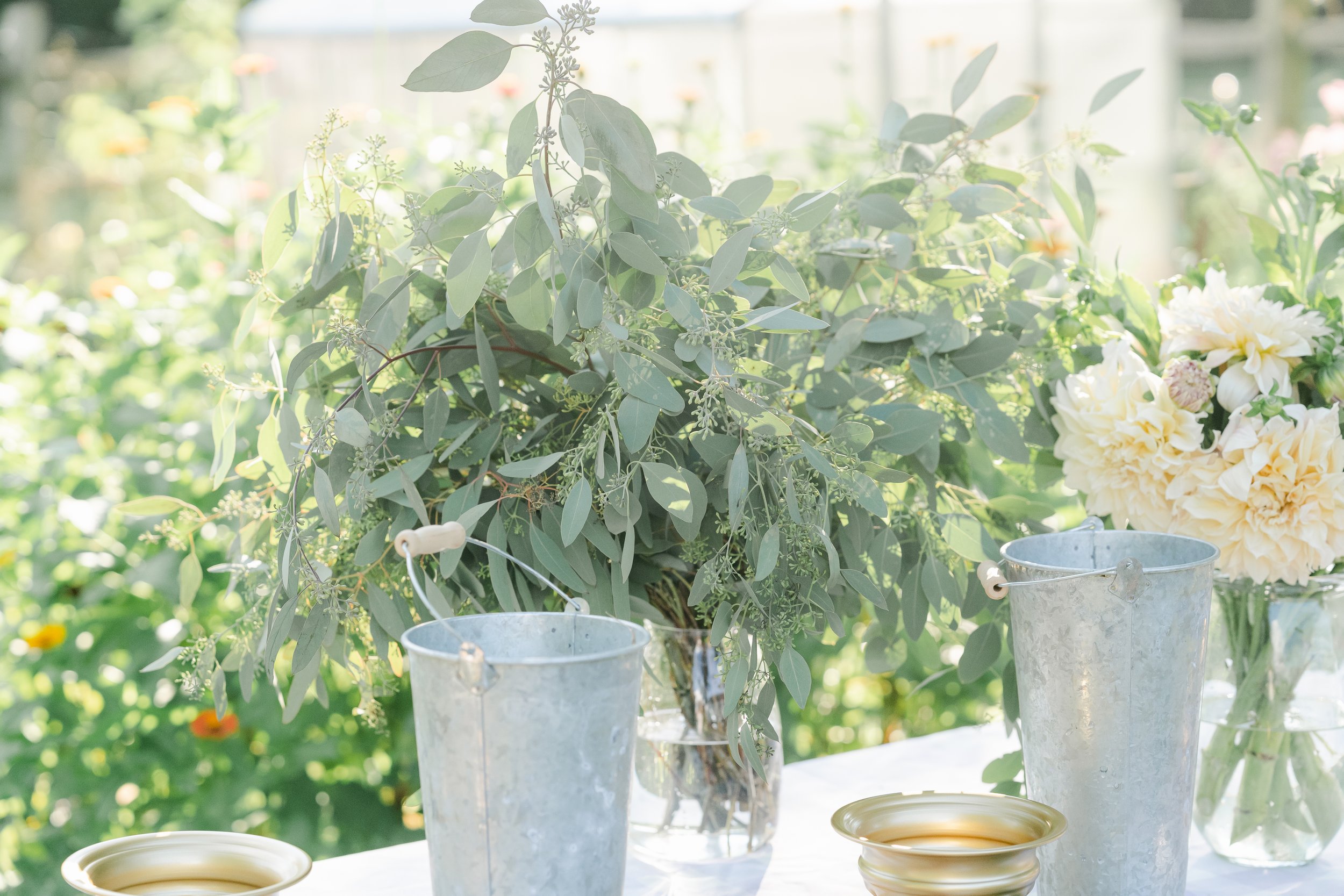Thank you for attending Waverly Flower Co’s recent workshop at Volpe Enterprises!
Below you will find some helpful information regarding the basics of building an arrangement, sustainable floral mechanics and tools, and where to source local flowers. Please do not hesitate to email me at alanna@waverlyflowerco.com with any questions that you may have!
FAQs
-
During the winter months, it’s challenging to obtain locally-grown flowers. This is because the vast majority of flowers grow best in warmer weather with greater hours of sunlight. However, there are a handful of regional flower farms that creatively grow flowers even in the middle of winter - including Moonshot Farm in NJ and b.a.r.e. Flower Farm in NJ.
That said, realistically in the middle of winter, most folks will not be working with local flowers. A grocery store or wholesaler that is open to the public, like Younger & Son, is a great choice.
From approximately April-October, there are a few great places to source locally-grown flowers. Some of my favorites include Rising Hill Farm (Quakertown), the Bucks County Flower Collective (based in Pipersville but with growers all throughout Bucks Co), and Flowers from 12th (also Quakertown!).
-
Most arrangements include the three following elements: Focal flowers, supporting flowers, and foliage.
Focal flowers are the big, beautiful, showstopping blooms that take center stage in a bouquet or arrangement. Depending on the season, these might include dahlias, roses, tulips, sunflowers, or ranunculus.
Supporting flowers are smaller and often clusters of flowers, like baby’s breath. They are typically more delicate than the focal flowers and provide a nice accent that rounds out the arrangement.
Lastly, foliage (aka greenery) is a necessary component to provide depth and create a backdrop that allows the flowers to shine - the right “greens” can really make all the difference!
In more complex arrangements, other elements may include filler flowers, textural accents, airy accents, and spike/line flowers (to add height).
-
There’s no right or wrong way to build an arrangement, but a few general rules of thumb that I like to consider are:
-It’s generally a good idea to stick with either warm-colored flowers and greens, or cool-colored flowers and greens. Mixing the two can be really tricky and look less cohesive.
-Typically, if you’re interested in an arrangement looking more whimsical and wildflower-like, incorporate lots of different varieties and colors. Alternatively, if you’re interested in a more elegant and traditional appearance, select fewer varieties and a more narrow range of colors.
-For smaller vases and arrangements, it’s usually best to choose an odd number (often 1, 3, or 5) of focal flowers; this tends to be more subconsciously appealing to the eye. If it’s a larger vase, this number is less important.
-When building your arrangement, it’s usually easiest to start with the more structured greens first, which will create the overall shape of your creation. I typically then add in the focal flowers, followed by the supporting flowers. If there are any really special flowers that I want to be featured prominently, I add them at the very end so that they’re not likely to be covered up by anything else (just remember to leave a little space for them).
-Avoid symmetry! Since each flower and stem is different, it’s nearly impossible to create a symmetrical look, anyway - and an intentionally asymmetrical design will look more natural, abundant, and garden-like.
-Less tends to be more when it comes to floral arrangements, when it comes to the actual number of stems to be used. I strive for every flower to "have its moment" and be visible and enjoyed by the receiver; additionally, a looser arrangement tends to look more garden-inspired, natural, and abundant. A good rule of thumb is that if you think you're about finished with your arrangement, you probably are!
-
“Sustainable mechanics” refers to any environmentally-friendly tools used to keep flowers in their place and/or staying hydrated. It can range from something very simple (using jute twine to wrap a bouquet or chicken wire in a vase) up to something more involved, like floral netting and moss for a large installation.
Floral netting can be found at wholesale florists (Younger & Son in Lansdale is a great source) and is similar to chicken wire but is a bit more pliable. It’s also typically a darker green color to help camouflage the stems. That said, regular chicken wire is a great - and much, much cheaper - alternative. It can be cut with floral scissors (“snips”) and “scrunched up” to fit within a bowl. Use waterproof floral tape to secure it in place. These items can typically be found at Younger & Son, larger craft stores (like Michael’s) or Amazon.
Most notably, floral foam (that green sponge-y stuff you’ll see used by traditional florists) is NOT safe for the environment; it’s filled with microplastics. The chemicals in it can also be irritating to the skin after prolonger or repeated exposure.
-
“Vase life” refers to the amount of time that flowers stay looking fresh and hydrated in a vase. Some flowers - like celosia or lisianthus - can last about two weeks in a vase, whereas other popular varieties - like large dahlias and garden roses - are only happy for a few days.
A few tips for increasing vase life:
-Keep your fresh flowers out of direct sunlight.
-Local fresh flowers tend to drink a lot of water, especially in the first couple of days after they’re cut, so it’s especially important to water them regularly!
-Add flower food (if you don’t have any on hand, add about 1tsp of sugar and 1tsp of apple cider vinegar to the vase and stir.)
-Every couple days, lift up your bouquet and trim the stems on an angle by about a half inch and switch out the water. Trimming stems on an angle increases the surface area slightly which allows them to “drink” a bit more water.
-Using “Quick Dip” and Crowning Glory’s Flower Spray can be a helpful way to keep your flowers looking fresh, especially if they have to be kept out of water for any period of time.





